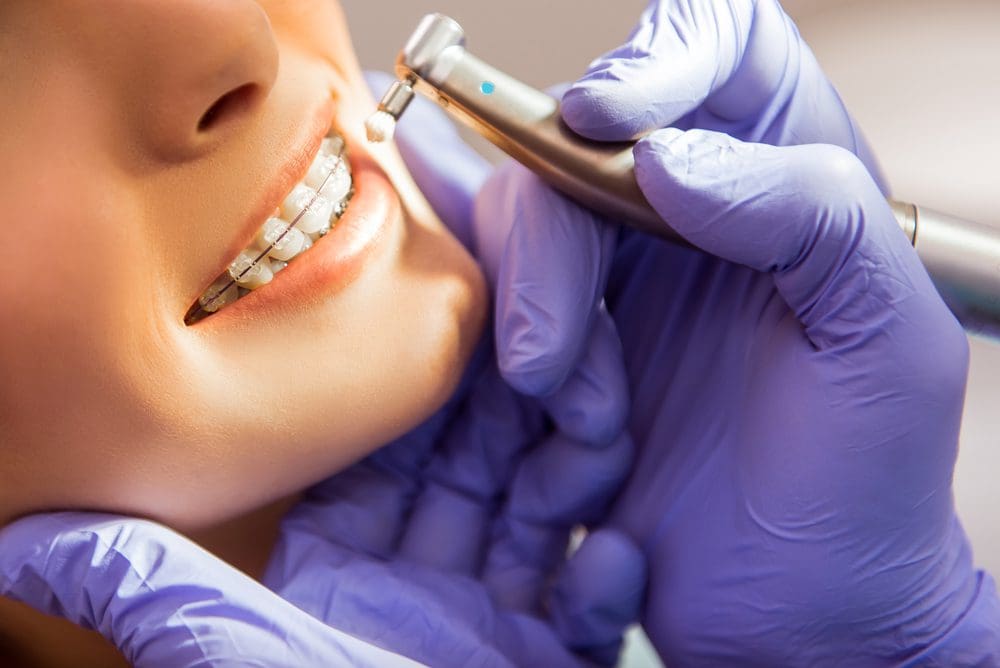Professional Cumming Braces and Aligners: What to Know Before You Go to
Wiki Article
Comprehensive Guide to Orthodontics Procedures for Dealing With Dental Imbalances
In the realm of orthodontics, the trip to accomplishing a completely aligned smile includes a myriad of treatments customized to remedy dental misalignments. From standard dental braces to unseen aligners and also surgical options, the field of orthodontics offers a series of services to address varying degrees of oral irregularities. Recognizing the ins and outs of each treatment, including their systems, benefits, and potential downsides, is essential in making educated choices about one's orthodontic treatment. As we browse with the detailed guide to orthodontic treatments for fixing dental imbalances, the intricate details of each technique will certainly unravel, shedding light on the course towards a functional and unified oral positioning.Orthodontic Procedures Introduction

In addition to conventional braces and clear aligners, orthodontists may also suggest other interventions like headwear, palatal expanders, or retainers to attend to specific positioning problems (aligners). These procedures are customized to each patient's special requirements and might entail a mix of therapies to accomplish the wanted results. Regular changes and monitoring are vital parts of orthodontic treatment to make sure development is on track and to make any required adjustments along the road. By undergoing orthodontic treatments, people can not only achieve a straighter grin but also improve their overall oral health and feature.
Standard Dental Braces: Just How They Function
When thinking about orthodontic therapies for dental imbalances, traditional dental braces stand out as a tried and true method for dealing with teeth placing. Typical braces include brackets, wires, and bands that work together to apply continual stress on the teeth, progressively moving them right into the preferred alignment. The braces are affixed to the teeth making use of an unique adhesive, and the cords are threaded through the braces. By changing the tension of the wires, orthodontists can regulate the direction and pressure put on each tooth, leading them into appropriate placement with time.
One key element of exactly how standard dental braces job is the procedure of bone makeover. As pressure is related to the teeth with the dental braces, the bone surrounding the teeth is improved to sustain the new tooth positions. This makeover is vital for the lasting stability of the fixed alignment. People will certainly need normal modifications at the orthodontist's office to make certain the dental braces remain to apply the right pressure for reliable teeth activity.
Unnoticeable Aligners: Pros and Cons
These clear, custom-made trays are virtually undetectable when worn, making them an enticing choice for people looking for a more visually pleasing orthodontic therapy. People can get rid of the aligners prior to consuming or cleaning their teeth, decreasing the danger of food obtaining stuck in the home appliance and streamlining the cleaning procedure.
Surgical Orthodontic Options
Surgical treatments in orthodontics present practical choices for attending to complicated dental misalignments that may not be efficiently fixed with traditional orthodontic therapies. While undetectable aligners and traditional braces can fix numerous orthodontic problems, certain situations require surgical intervention to accomplish optimum outcomes. Surgical orthodontic choices are typically advised for extreme malocclusions, significant jaw discrepancies, local search for dentists and situations where the underlying bone framework needs adjustment to accomplish proper alignment.One usual surgical orthodontic treatment is orthognathic surgical procedure, which includes repositioning the jaws to correct practical concerns such as trouble talking or eating. This surgical treatment is usually performed in partnership with an orthodontist that helps line up the teeth before and after the treatment. Surgical orthodontics might additionally entail procedures to reveal affected teeth, get rid of excess gum tissue, or reshape the jawbone to produce a much more unified face account.
Prior to taking into consideration medical orthodontic options, individuals undergo a detailed evaluation to figure out the requirement and prospective benefits of such treatments. braces. While surgical treatment may appear challenging, it can significantly improve both the function and aesthetic appeals of the smile in instances where standard orthodontic therapies fail
Retainers and Post-Treatment Treatment

Post-treatment treatment entails complying with the orthodontist's instructions vigilantly. This might consist of proper oral hygiene practices, going to follow-up consultations, and putting on the retainers as recommended. Failing to follow post-treatment care directions can result in regression, where the teeth slowly return in the direction of their original settings. Regular retainer wear, good dental health, and routine oral check-ups are vital for maintaining the outcomes attained via orthodontic surgical procedure and making certain the lasting security of the remedied dental alignment.
Verdict
Finally, orthodontic procedures offer numerous options for dealing with oral imbalances. Conventional braces use steel brackets and wires to shift teeth right into proper positioning. Unseen aligners offer an even more discreet option yet may not appropriate for all instances. Surgical orthodontic options are offered for a lot more extreme imbalances. Retainers are frequently utilized post-treatment to preserve the new positioning. In general, orthodontic treatments can properly improve dental health and wellness and visual appearance.As we browse through the extensive overview to orthodontic treatments for correcting oral imbalances, the detailed information of each approach will certainly unravel, shedding light on the course toward a unified and useful dental placement. - cumming orthodontist
One of the most common orthodontic treatments is the usage of dental braces, which are composed of metal brackets and wires that use page gentle stress to gradually move teeth into the desired setting.When thinking about orthodontic treatments for oral imbalances, typical braces stand out as a tried and true technique for correcting teeth placing. Additionally, unnoticeable aligners may not be appropriate for complicated next orthodontic concerns that require more substantial teeth movement, as they are typically recommended for moderate to moderate situations. Retainers are personalized orthodontic tools developed to hold teeth in their dealt with positions after the conclusion of orthodontic treatment.
Report this wiki page